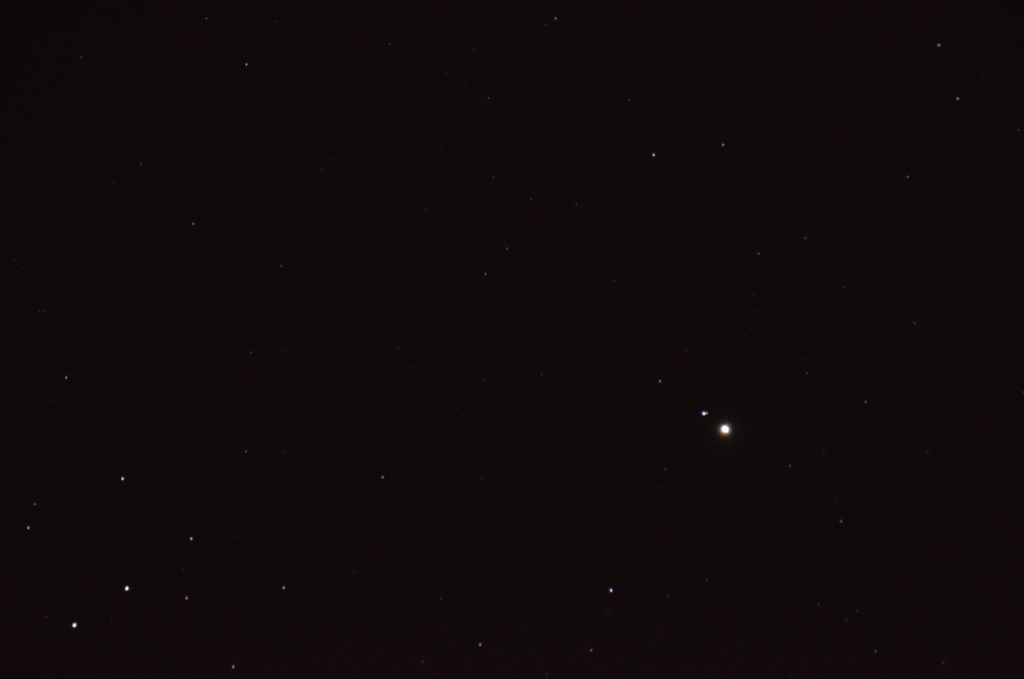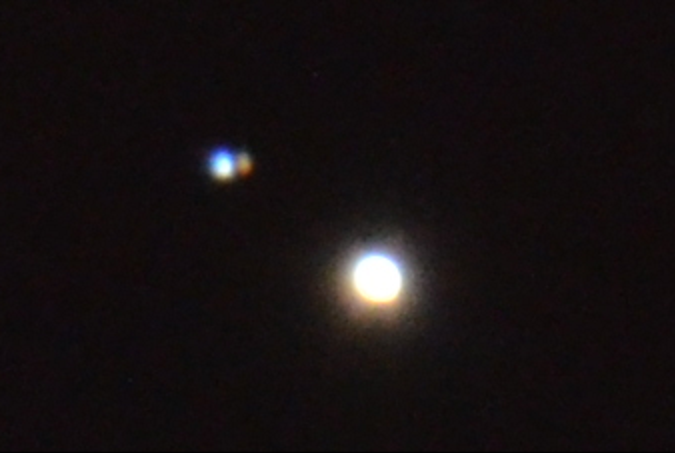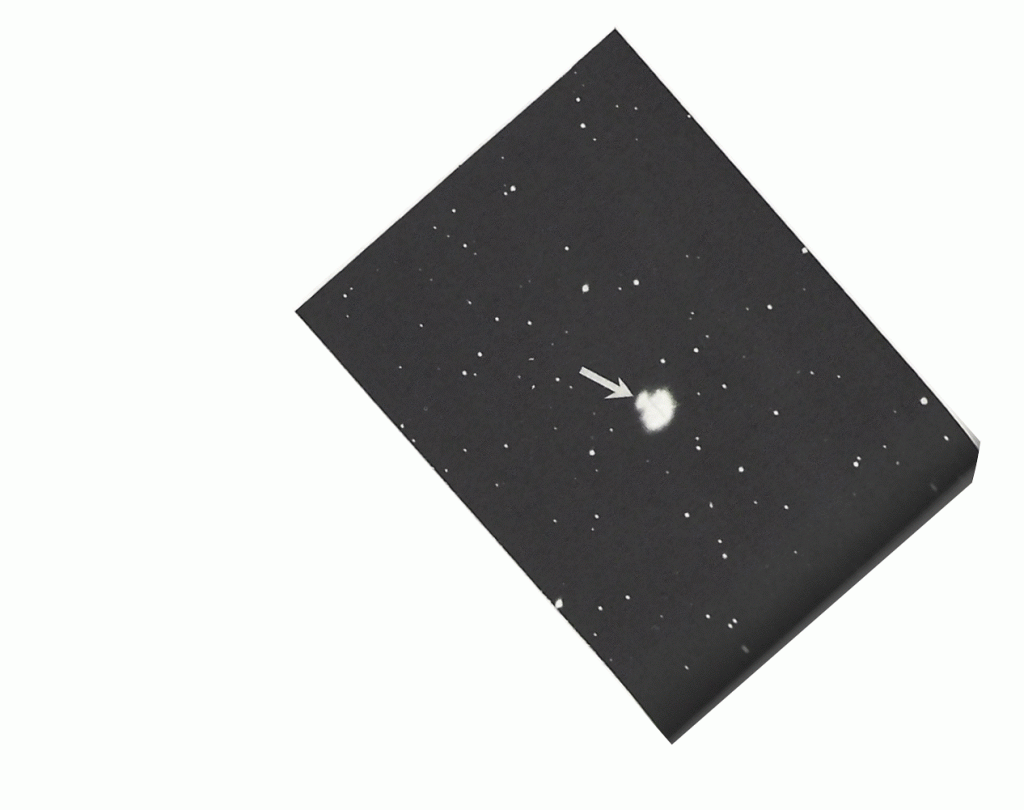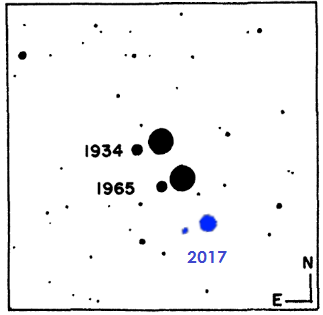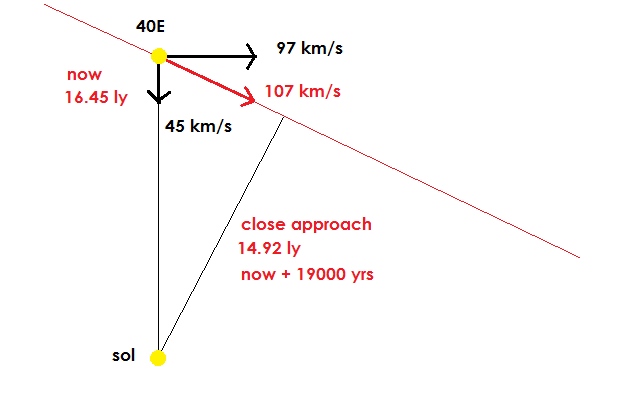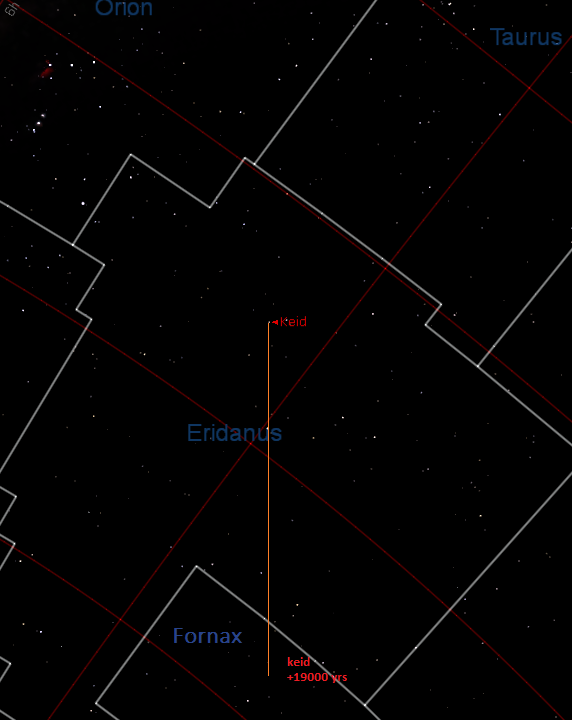40 Eridani is the designation of “a star” ( actually a 3 star system ) in the constellation Eridanus. One of these 3 stars is a White Dwarf, and famously the most easily accessible of this type to amateur observation.
All this became known to me in a recent conversation, and I noted, via my Starry Night software, that the current viewing window was drawing to a close this month of March, so I determined to get a photograph of it, as I have found that photography shows a lot that is undetectable at the eyepiece.
I use prime focus projection using my Nikon D5100 camera body mounted with an adapter on my Orion StarMax 127 mm, with a 1540 mm focal length. In this configuration it’s essentially a very long focal length camera lens, with an upright image through the view finder.
I have a “clocked” mount and I take a maximum 30″ exposure using a remote shutter release. This is pretty low end stuff compared to the deep sky shots you see with much more sophisticated amateur equipment and processing.
I can get good results, though, and in this case, the picture came out well.
The bright yellowish star at lower right with the smaller white companion is 40 Eridani and the companion is the white dwarf. If you “click to enlarge”, you can easily see the small reddish close companion of the white dwarf, which I did not really expect to resolve, so of course I’m quite pleased with the picture.
Here’s an enlarged excerpt, just to celebrate.
There is a picture of 40 Eridani in Volume Two of the classic Burnham’s Celestial Handbook, called there Omicron 2, as “omicron” was the sequential designation, after alpha, beta, etc. of a pair of stars in the constellation Eridanus ( The River. ) Omicron 1 is not physically associated with the Omicron 2 system, aka 40 Eridani.
Just to complete the confusion, my Starry Night software shows Omicron 1 and Omicron 2 as “Beid” and “Keid”, which are “traditional star names”, although I read that the tradition in this case was officially adopted in 2016 ! Of course, Burnham’s does not use these names.
Anyway, the picture there is from an exposure at Lowell Observatory, of Pluto fame, taken around the same time as that discovery.
I took my photo and “pushed” the brightness and contrast to the maximum to bring out the background stars, then did a match-up with the photo illustration from Burnham’s. Here is a “blink comparison” using the Free Online Animated Gif Maker:
… click to run the animation.
It’s a little confusing at first glance, but hold your gaze on the stars above 40 Eridani ( in this orientation ) and you will see that they match almost perfectly. However, 40 Eridani “jumps up and down” .
I wasn’t looking for this and it threw me for a loop, but in reality, this is a record of the actual “proper motion” of this triple star system, relative to our solar system. In fact Burnham’s describes this motion and has a pair of illustrations showing the position circa 1934 and 1965.
I pasted these into one and added my observation ( in blue ) …
The blue imagery is a replication to scale taken from my high contrast image used in the blink comparison.
More on Proper Motion
The term “proper motion” in my experience, refers to the apparent angular movement of an object against an ideal inertial reference system centered on the sun. However, one might think that it ought to include the “third component” of the relative velocity, i.e. what is termed “radial velocity”.
Nevertheless, I think historical usage has treated these separately. This caused me some confusion in reference to a statement in Burnham’s that the “true space velocity is about 62 miles per second.”
I took this at face value at first, and assumed that the value must include the component of “radial velocity”, later mentioned. However, I don’t believe this is the case. The discussion was of “proper motion” as traditionally defined, so this “true velocity” was simply a conversion from angular to linear velocity along the apparent path in the sky.
The determination of radial velocity is a whole different question, since it involves physical analysis of the received light, and not any apparent motion of the object.
The question is mooted once we have the “proper motion” expressed in arcseconds per year, along with the “radial velocity” expressed in km/sec, or any such units for that matter.
In fact we may note that 186,000 = 62 X 3000, and I think this indicates that the value of 62 miles per second was being given as a “round number” for the transverse linear speed of 40 Eridani … i.e. c/3000 .
… but all this is a distraction! I just want to get an idea of the past and future apparent motion of 40 Eridani, and this can be based on a given specification of the proper ( angular ) motion, and the radial velocity.
With the understanding that the linear approximation won’t hold up forever, we see that we have a simple freshman physics problem of relative velocity between two objects, in this case the sun and 40 Eridani.
The trajectory of 40E wrt the sun is then a “great circle” in the sky, and wrt this path it is determined by the general equation for any such “fly by”, within a scale factor only for time.
The “zero point” of this trajectory is the point of closest approach, which provides the distance scale, and the time scale of the angular displacement is determined by this distance divided by the speed of the object.
That only leaves the determination of the point of closest approach of 40E to the sun, expressed as an angular displacement along its apparent path from its current position. I hope this diagram explains everything!
Here is my estimation of the apparent path in the sky of 40 Eridani over the next 19000 yrs, in accordance with the diagram above, and overlayed on a view from my Starry Night software:

